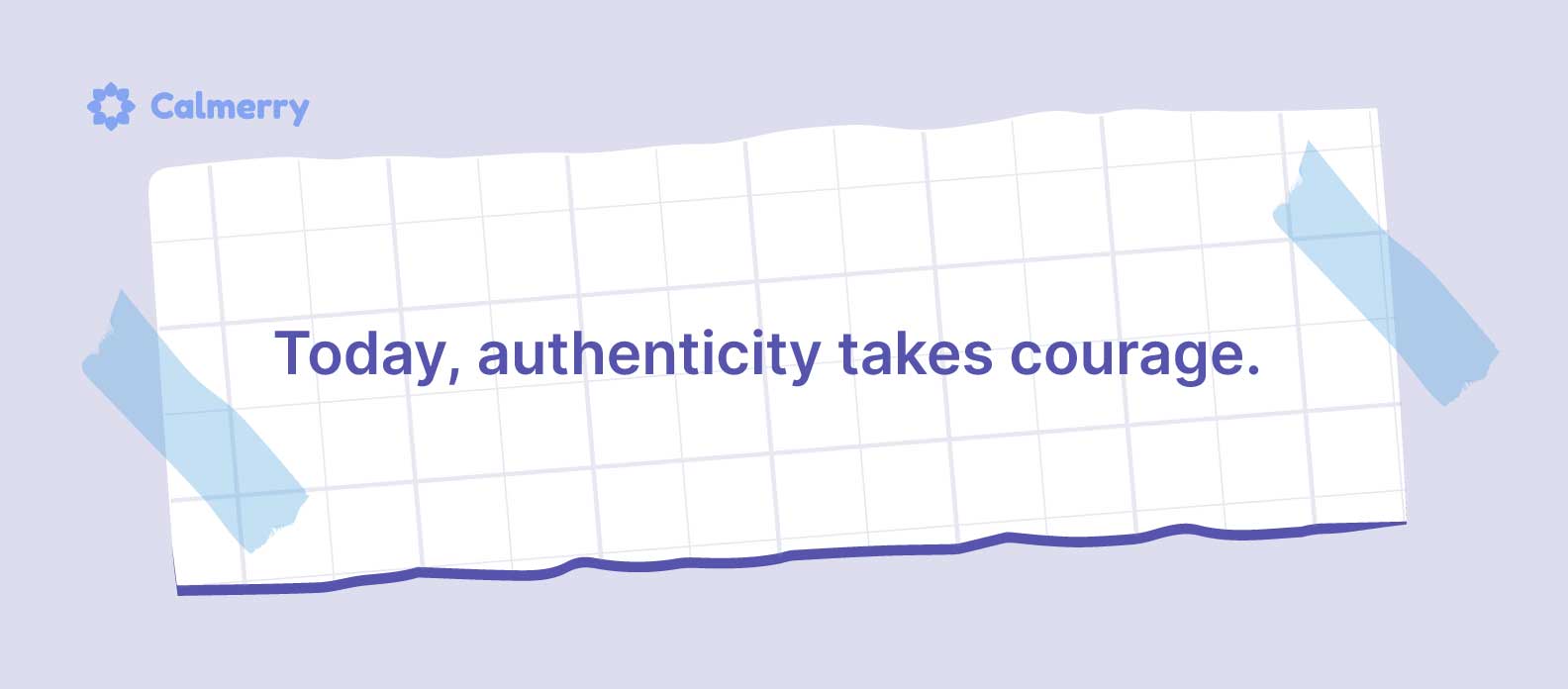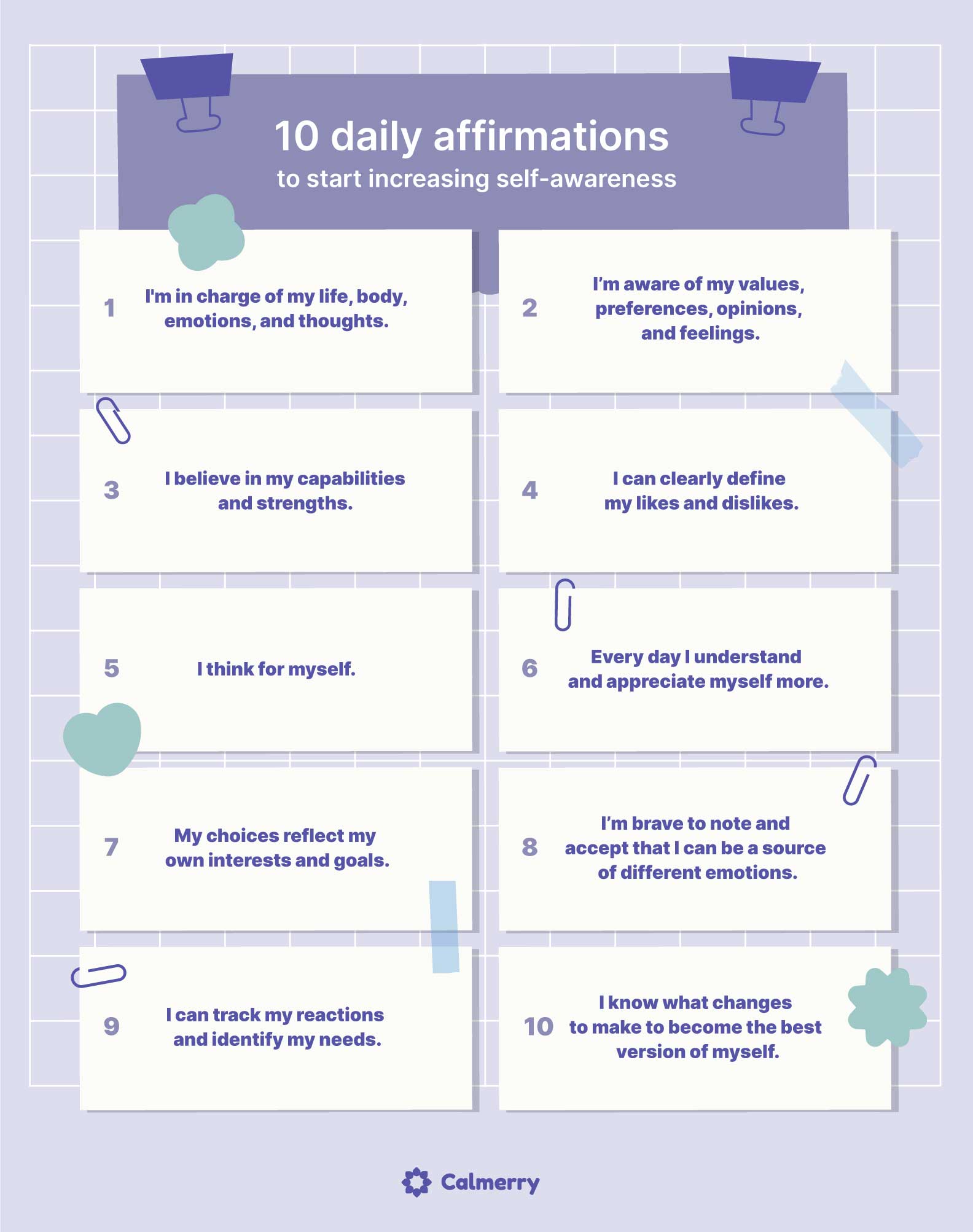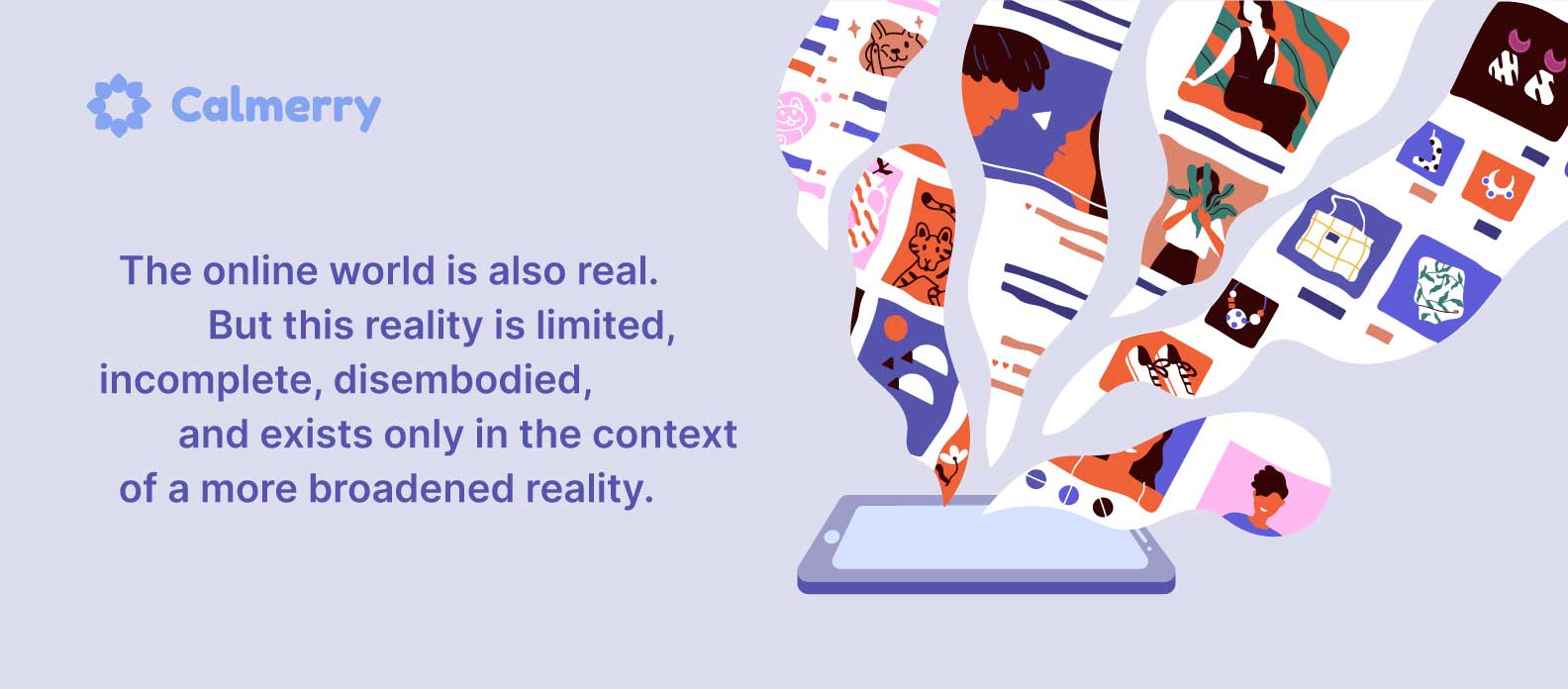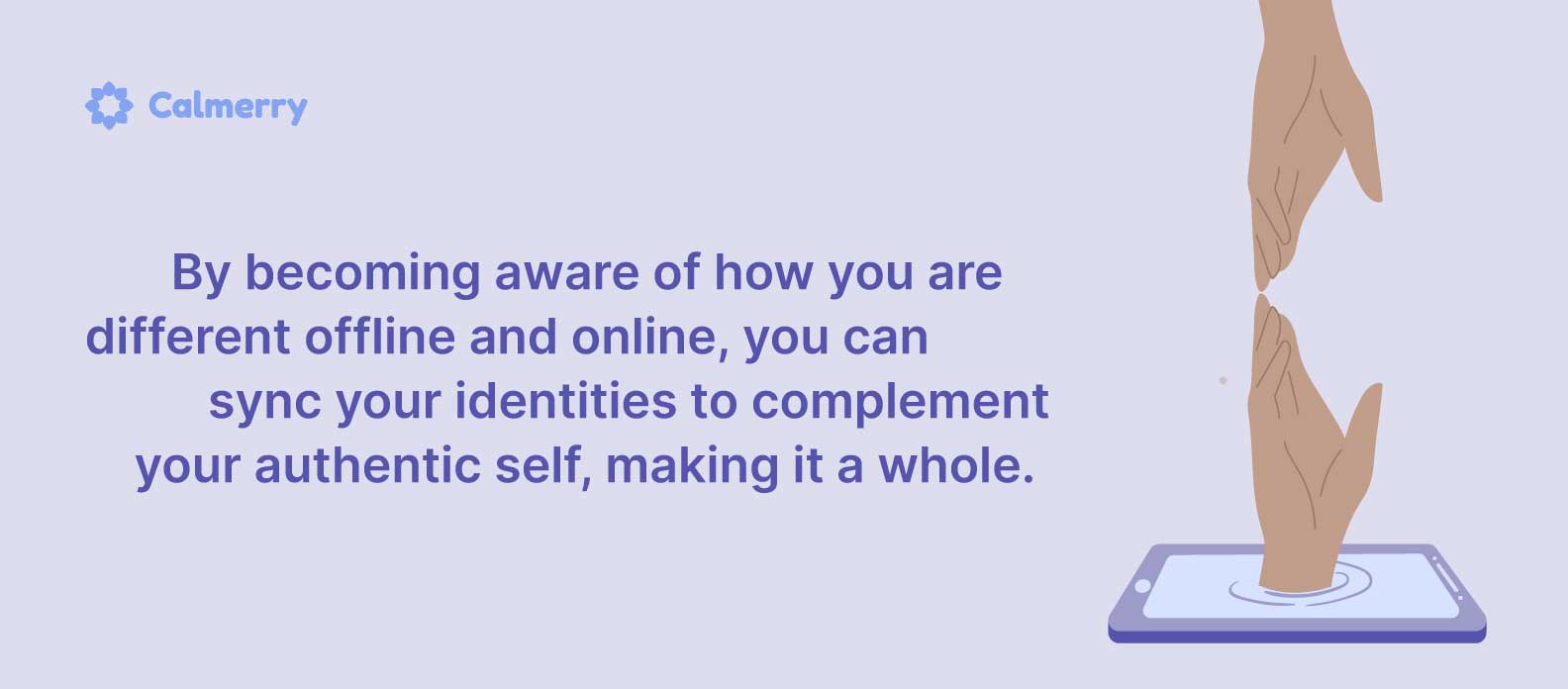Why and How to Sync Your Online Persona with Your True Self

In this article
We are all unique and have multiple identities: occupation, religion, sexual orientation, age, race, gender, values, likes and dislikes, and so on. For example, you can identify yourself as a woman, a partner in a same-sex couple, a daughter, a blood donor, a booklover, Tom’s best friend, and a person who likes coffee and values honesty.
And there’s nothing wrong with selectively revealing your identities online and adding virtual ones to this list. You can also be a videoblogger, a photographer, a recognized LinkedIn marketer, a TikTok trendsetter, or an internet troll. They can be an expansion of your real-life identities or be completely different ones, depending on the “tone” of digital space.
However, aligning your online persona — how and what you project yourself as virtually — with your true self is important. Although your identities are naturally mutable and dynamic, the core self can tell you that something is wrong or isn’t in line with the real you. Neglecting your true self can affect your mental well-being, self-esteem, and vitality.

As the digital space has become strongly embedded in our daily lives, there’s much talk today about how to reduce the discrepancies between one’s presented virtual self and one’s authentic self.
If you say, “This is not me,” when looking at your online presence and you feel like you’re losing your authentic self, read this article. Explore why and how to sync your online persona with your true self and enjoy a unique, multifaceted you.
How to know if your online persona and authentic self are not in sync
First, know that the digital space can greatly influence our real-world selves through:
- Social comparison (how we evaluate ourselves compared to others)
- Peer interactions that can support or disapprove of our identities
- Social media pressure defines who to be, what to want, how to look, and what or what not to say
- What others say about us or people/things/events we relate to.
For example, let’s say all your online friends have started to hate your favorite actor. You feel like you’re split between joining in and supporting them in comments or being true to your feelings. Going along with friends’ expectations seems necessary to succeed in friendships but is “unnatural” to your identity. And then self-doubt may follow: “Is there something wrong with me if everyone hates the person I like?”
Or, you’re afraid to express yourself more and to like/repost what your true self supports because of social anxiety, privacy concerns, self-esteem issues, or community oppression. It looks like a trap between your authentic need to express yourself freely and some challenges that prevent you from fulfilling that need. As a result, you see that your online persona falls short of your authentic self, and you say, “In real life, I’m truly a better/funnier person!” Actually, it’s fine until it starts to bother you and affect your self-worth.
Or, imagine that you’ve created a perfect Instagram picture of yourself and then find it hard to broadcast your “imperfect,” authentic life. Showing other parts of yourself seems impossible due to the fear of being rejected by others or the desire to avoid unwanted attention. This can cause a real conflict between your online and offline selves.
By the way, even supermodel Bella Hadid recently opened up about her own struggles with mental health and the pressures of social media, pointing out that social media isn’t real.
selves
If you think your online persona doesn’t reflect the real you, check these warning signs:
- Your actions contradict your values, morals, or preferences
- You’re dissatisfied with your digital presence and internet experience
- You can’t be true to yourself, and it makes you feel confused, worthless, anxious, depressed, and disconnected from yourself and others
- You feel you’re getting detached from your identities
- You find it harder to distinguish between virtuality and reality
- You experience significant inconsistency in talking to others online and in real life
- You hide or suppress who you really are, and it affects your mental health
- You notice some artificiality in the behavior and emotions of your online persona
- You realize that “this account needs more of the real me” or “there’s too much of me here.”
If you can relate to some of these points, find out what you can do to sync your virtual self with your authentic self.
1. Project your real self the way you want and as much as you want
“A man has as many social selves as there are individuals who recognize him and carry an image of him in their head.” — William James.
You can’t control how others perceive you off- or online or what image of you they carry. But you do have the power to act in alignment with your authenticity and depict yourself the way you want. You’re the one to create the self-image you consider true for yourself. While posting something, ask yourself, “Can I recognize myself in that? Is it really me?”
Also, an equally important question would be, “Do I project myself as much as I want?”
A social media presence can create real pressure — it demands the necessary regular updates to maintain accounts and hold the full attention of your audience. When you share more than you need to in terms of frequency and your personal life, it may feel overwhelming and cause emotional insecurity.
Think about slowing down and setting boundaries if you’re uncomfortable with your social media activity. Share as much as you need to. Also, keep in mind that your physical and emotional safety and security are priorities.
2. To be more authentic, be brave
How others see us can greatly influence how we experience ourselves. It’s one of the reasons we often do our best to fit in and manipulate digital self-images to create an illusion of being better than we are or being someone else.

“Being authentic means matching your true self,” says Oksana Levchuk, a certified Gestalt therapist, “You know what you want, where you go, what you value, what you feel. You make decisions based on how you and others react. You know why you do this or that, and your decisions match your true self.”
That advice is quite hard to follow in the digital space when society’s striving for perfection.
That’s why people can be very deliberate in picking the photos they share. They choose to hide some of the best moments of their lives because they’re afraid of ruining a polished self-image, being vulnerable, and showing insecurities.
But remember that no one is ideal. And it’s okay to show yourself as a real human being.
“We’re prone to extremes — I’m either ingenious or worthless — with no in-betweens,” adds the psychotherapist, “and it seems like showing your real self means being immediately rejected. But if you can’t find ways to please anyone, it doesn’t mean that your self-expressions are bad (unless they harm others.) Be risky and experiment, starting from the small. You can discover something new, something different. When we don’t face challenges, we stop developing.”
3. Increase self-awareness
Self-awareness is the foundation for living a joyful life as the person you truly are. It’s the ability to take an honest look at your life, to reflect, and tune in to different aspects of the self: feelings, thoughts, motives, desires, passions, weaknesses, beliefs, and so on. And self-awareness means more than having some general ideas about yourself.
Self-awareness helps determine whether you act as you’re expected to or in alignment with your true self. It also helps with going beyond approval-seeking habits, building a healthy sense of self, recovering self-worth, and embracing yourself as a unique person.
Here are 10 daily affirmations for you to start increasing self-awareness:

Download 10 more self-love affirmations to boost your self-esteem here 👉 10 Self-Love Affirmations
4. Be mindful
Remember that you don’t have to share everything in the digital space and capture every moment of your life. Instead, give yourself some time to enjoy the wonderful place you’re in, the people around you, the smells, tastes, and sounds. Use all your senses. Discover what’s going on with you in the now — what your feelings, thoughts, and body sensations are.
Use your smartphone to fix the memorable moments, but don’t let your screen be an obstacle between you and your impressions of life.
So, learn to reconnect with yourself and just “be.” Practicing mindfulness can help you get to know yourself better and increase self-awareness.
5. Embrace the fact that you’re more than your digital presence
We carefully create our online personas so they’ll be better representations of our in-person selves. We want to seem more beautiful, wittier, funnier, and stronger. At the same time, social media algorithms try to “feel” our personalities, using manipulative ads and predicting our preferences.
However, human beings are complex, multifaceted creatures. We’re more than a digital replica or a part of the AI guessing game.
Psychotherapist Oksana Levchuk supports this point, “If I built my self-image based only on how I’m present in social media, and what my environment is there, it’d be a very one-dimensional, flat part of self-image. Because in daily life, I’m present in a lot more aspects. I’m more than my avatar. And I’m greater and broader than my account.”
6. Find the line between virtuality and reality

“On the internet, nobody knows you’re a dog.” — Peter Steiner.
There, we can hide the real-life context and present only some of our identities or warp them altogether. And the more we’re involved in creating the reality we want to be part of, the more we begin to believe that this is the way we should live.
Online identities and real-life identities aren’t mutually exclusive. But some people, especially adolescents, often choose their virtual identity as the ultimate one and start neglecting their identities in the real world.
Oksana explains, “The online world is also real. But this reality is limited, incomplete, disembodied, and exists only in the context of a more broadened reality. We can filter it and add more protective layers, which is appealing. But this way, we create a parallel universe and then feel some inner conflict.”
The psychotherapist adds, “And over time, we may find out that it’s more pleasant to be in this reality than in a broader one — where some terrifying, confusing, or even life-threatening situations can happen. But contrary to fears, a broader reality is full of “goodies.” There, we can also find love, acceptance, care, support, and strong, satisfying relationships. It’s like enjoying only one layer of a cake — that’s what being mentally present in a digital space only means.”
So, it’s a good idea to find the line between virtuality and reality. Remind yourself where you are physically and focus on your feelings. Catch yourself fantasizing, exaggerating, and getting lost in dreams. Rely on reality and remember that what you see is not the whole context. There’s more underneath.
7. Reflect on your real-life conversations
Some people are trapped in unfavorable situations when others complain that talking to them online and offline is like talking to two different people. This could be because of:
- Digital distance
- Online world limitations
- Social anxiety
- Deliberate self-filtering
On the internet, behind the safety of our computers or smartphones, we miss out on many opportunities for spontaneity. The digital space allows us to double-think what we are going to say, pass it through several filters, edit, and then hit “post.”
In real-life communication, there are things we usually cannot control in such a way — blushing, hand sweating, racing thoughts, emotions, body language, tone of voice, and sometimes content. Having little time for overthinking and no chance for immediate deactivation, we’re more spontaneous and authentic — just like who we are. That’s the magic of real-life communication.
And reflecting on who you are, how you behave, and what you feel during face-to-face conversations can help tune your online persona into your authentic self.
Also, recognize how your communication style changes depending on the person you’re talking to. That will add more diversity and real-life true you to your online communication.
8. Rely not on social media metrics but on your emotions
In the online world, we’re free to experiment and watch how others react to us. And depending on these reactions, we can correct our online reality and our representations there. For example, if your post didn’t get the engagement you expected, you can delete it. We’ve all been there.
But the number of likes, impressions, shares, and follows shouldn’t direct your actions or define you. Instead, rely on the emotions and feelings you get from your online experience.
If you say, “I like this photo, it’s memorable. And this caption is perfect because I noted my current feelings at that moment.” — that’s enough. It’s not embarrassing but worth keeping in your feed because that was you.
9. Meet your online persona
Your online persona can reflect your real-life identities that find exposure in the digital world. Or, your experience in the online world can be the source for emerging online and offline identities never known to you before. Meet them!
Spot what’s new in you or feel the difference between your online persona and real-life identities. Note what brings you excitement, what complements your authentic self, or what causes distress. Pay attention to the moments when you just want to stay behind the screen and mask your real-life identities in the online world.

Final thoughts
The digital space can be a fun and useful tool to introduce your authentic self to the world and discover new facets of yourself. But sometimes it’s hard to be truly authentic online because you may battle with:
- Anxiety
- Depression
- Trauma
- Shame
- Guilt
- Relationship issues
- Self-esteem issues
- Imposter syndrome
- Poor self-awareness and an unhealthy sense of self
- An inability to understand your true self
- Lack of self-love
- A warped self-image
In any case, it’s a good idea to try therapy and get professional help from licensed therapists to address these issues. You can see a mental health professional online on Calmerry.
Our therapists can help you learn to embrace your unique and multifaceted self, challenge negative self-talk, discover your strengths and accept weaknesses, and be more resilient online and off, enjoying your authentic self.
online therapy
live video session



